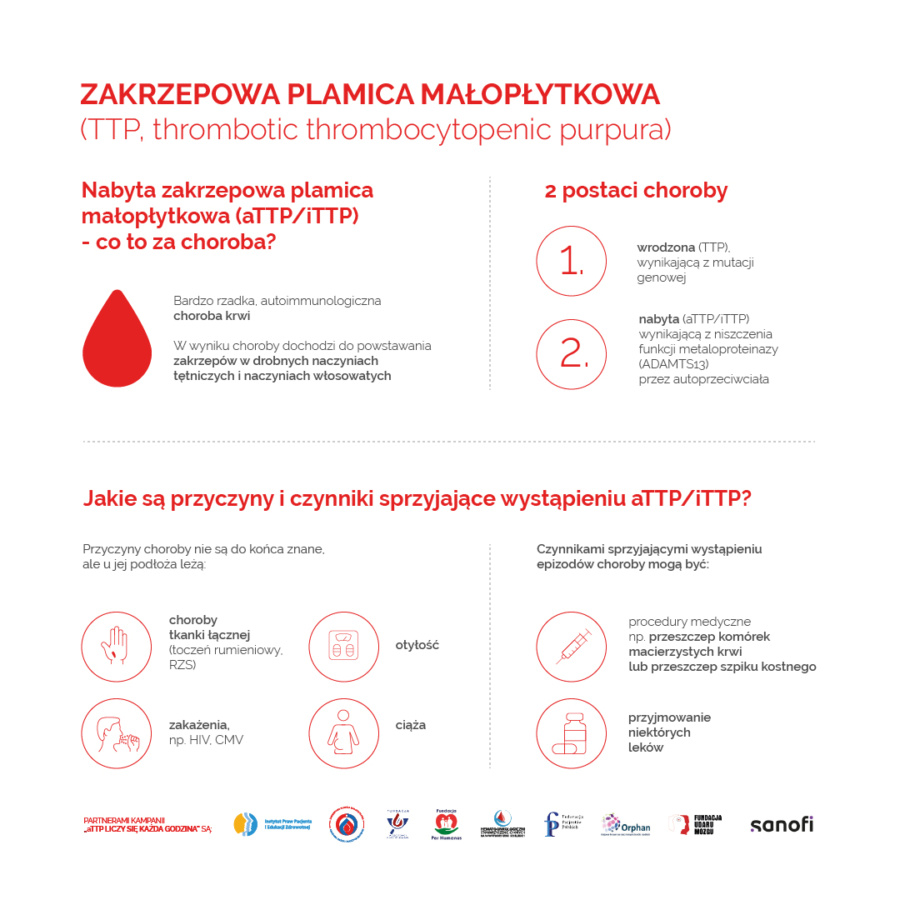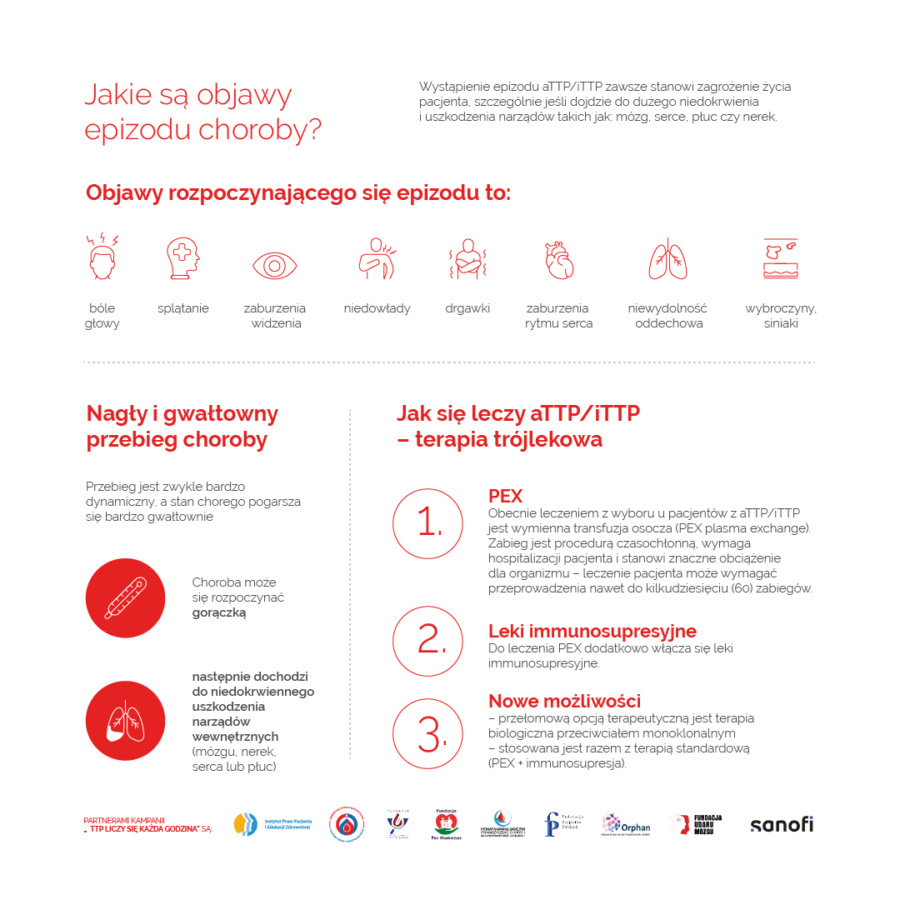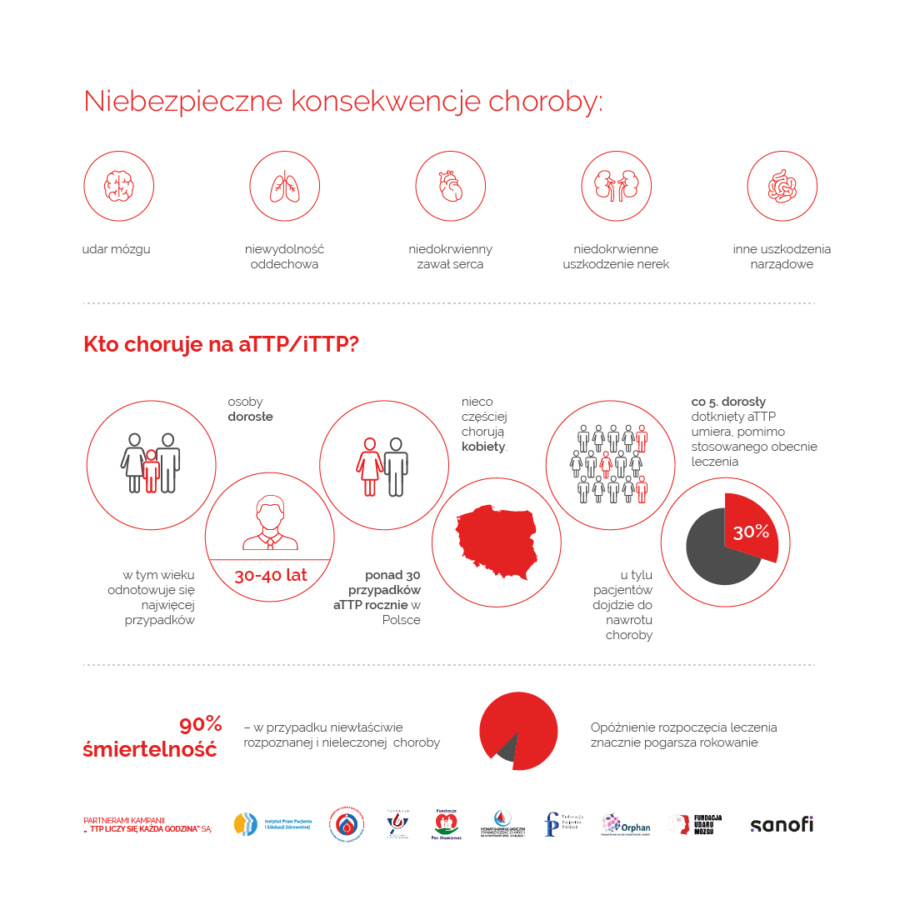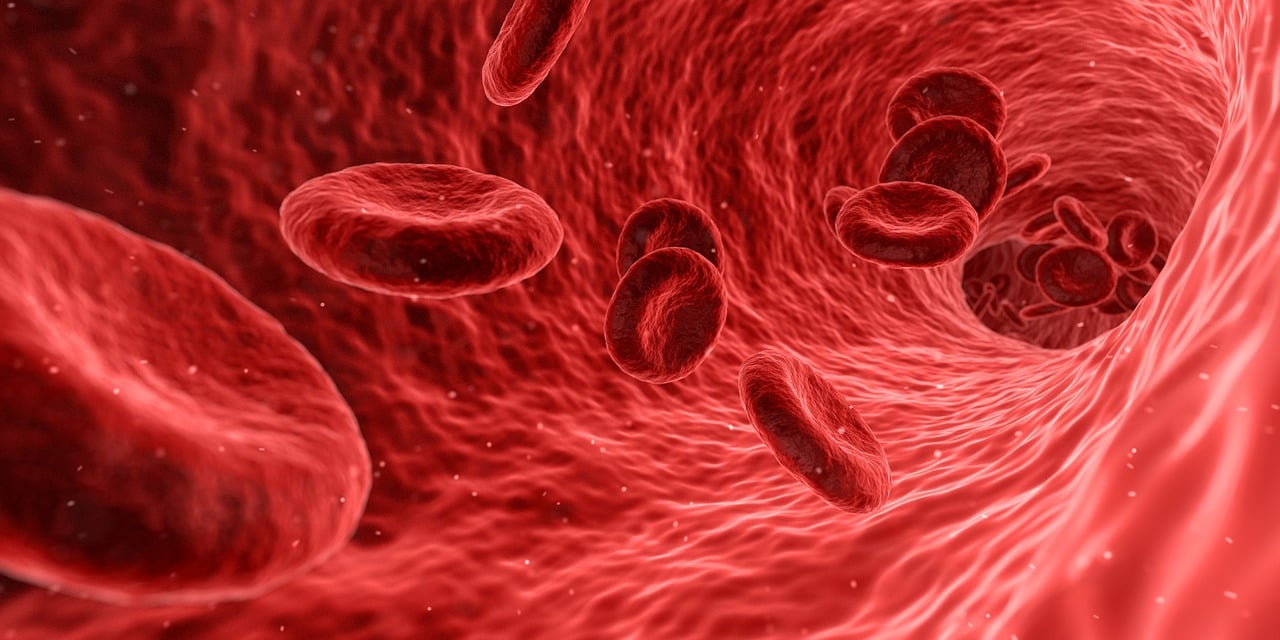In recent times, medicine has made incredible advances in the treatment of rare diseases and, thanks to the medical solutions introduced, many patients are able to lead almost normal lives. However, there are still conditions that remain an enigma of medicine and, despite the latest therapeutic options, remain in the shadows. One of these is acquired thrombotic thrombocytopenic purpura, iTTP/aTTP, a rare and dangerous blood disease that still remains a mystery and a challenge for doctors worldwide.
- iTTP/ATTP - is a rare but extremely dangerous haematological disease that can appear suddenly and pose a serious threat to the patient's health.
- In Poland, about 30 people are diagnosed with iTTP/aTTP each year, but experts emphasise that there may be more as the disease is sometimes not diagnosed in time
- International Thrombotic Thrombocytopenic Purpura Day is celebrated worldwide on 19 September to draw attention to the needs of patients struggling with it.

Ultra-rare and ultra-dangerous. Acquired thrombotic thrombocytopenic purpura (iTTP/aTTP) is a rare but extremely dangerous haematological disease that can occur suddenly and lead to serious health complications, including death. Worldwide, the incidence of iTTP/aTTP is estimated at 1.47-3.10 / million people, making it an ultra-rare disease. In Poland, 30 cases are detected annually, but experts stress that there may be more, as it happens that the disease is not diagnosed in time. Such a small scale of the problem may be encouraging, but it also has its dark side: there is a lack of widespread knowledge of the disease and the experience that is so necessary to detect the problem.
iTTP/a episodeTTP: Life-threatening. The most important feature of iTTP/aTTP is that each episode of this disease is a real threat to life. The blood clots that develop as a result of the disease can lead to ischaemia of various organs, such as the brain, heart or kidneys. It is these blood clots, which form in the circulation, that make the complications of the disease potentially fatal or long-term disabling.
Young patients on the road of struggle. Patients who develop their first iTTP/aTTP episode are usually young people in their 30s and 40s. These are people who, from one day to the next, have to practically suspend their previous professional, family and social lives in order to face this dangerous disease.

Risk and diagnosis. Risk factors associated with iTTP/aTTP can include a number of different factors. These include obesity, the presence of HIV, rheumatoid arthritis and lupus erythematosus, among others. Interestingly, recent studies suggest that iTTP/aTTP may also be one of the potential side effects of COVID-19, increasing the importance of monitoring patients infected with coronavirus. The disease may also occur in patients undergoing blood stem cell transplantation or bone marrow transplantation. Certain drugs may also increase the risk of iTTP/aTTP.
The fight against iTTP/aTTP: challenge and opportunity. Once the diagnosis is confirmed, immediate treatment must be implemented. One possible therapeutic approach is treatment with plasmapheresis; however, it must be remembered that this type of therapy often requires prolonged hospital stays and does not protect against dangerous relapses. The current standard therapy, which is based on plasmapheresis and immunosuppression, is for supplementation of ADAMTS-13 and elimination of anti-ADAMTS-13 antibodies. However, the therapy has a limited effect, with a mortality rate of approximately 10%-20% and most deaths occurring within 14 days of diagnosis (median 9 days).
In the treatment of iTTP/aTTP, the key is to quickly achieve remission, i.e. to restore normal platelet counts by stopping clot formation. It is this achievement of remission that makes it possible to halt disease progression and minimise organ damage. However, even in approximately 30% patients, relapse occurs after standard treatment.

New hope in treatment. iTTP/aTTP is a disease that still remains an enigma of medicine, but as we gain more information about it, there is hope for more effective treatments and greater awareness of this rare disease, which may help to diagnose patients more quickly and treat them more effectively.
Recently, there has been new hope for iTTP/aTTP patients in the treatment of the disease. One of the breakthroughs is biological therapy with a monoclonal antibody - used as an adjunct to standard therapy (PEX + immunosuppression), which is aimed at protecting patients from relapses. which is a significant step forward in the fight against this dangerous disease. Such treatment is also an opportunity to improve the quality of life of patients affected by this rare disease.

